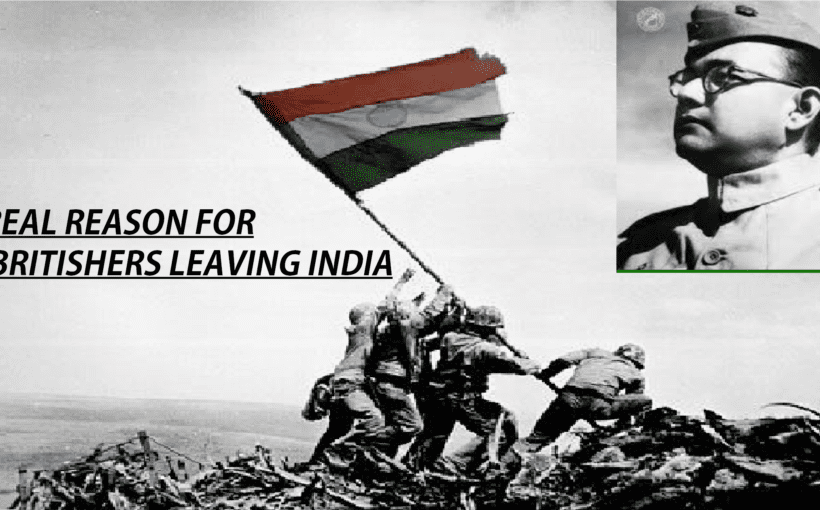India’s North West frontier had been a traditional route for the Invaders. Alexander the Great, the Huns, Arabs, Turks etc all invaded India from North West front. But in 1942 the soldiers of Azad Hind Fauj under Netaji Subhash Chandra Bose with the help of Japanese Army invaded the North East front of the Indian subcontinent which was enough to shake the foundation of the British Raj.
Content
Background
After the outbreak of Second World War on 1 September 1939, the colonial territories of the British in South East Asia were threatened by the Japanese. The then Viceroy of India decided to dispatch 70,000 Indian Soldiers to protect these colonies and announce that India will support the British and the allies in World War without taking the permission of the Indian leadership.
Due to this, the Indians were heavily Outrage and the Indian National Congress leaders resigned from provincial ministry. At that time Subhash Chandra Bose started a mass protest in Bengal. The main aim of this protest was to unite the Indians against the British Raj and make a decisive move to freedom. In this protest Netaji ordered his followers to remove the Holwell Monument.
Due to this the British arrested Netaji and sent him to jail. Later he was put on house arrest but on 17 January 1941 Netaji escaped from the British siege to Germany via Afghanistan and USSR.
He then managed to meet Adolf Hitler. The Chancellor (Hitler) convinced Bose that he should attack the British territories from the east with the help of the Japanese Army.

Invasion of Imphal and Kohima
The Germans provided Bose a Submarine (U-180) to reach Japanese occupied Indian Ocean. At the same the Japanese were able to capture the South East territories of the British. Territories of Malaya, Singapore, Hong Kong and Philippines fell under the Japanese. When Netaji reached Tokyo , he convinced the Japanese that the prisoners of War captured by the Japs from these territories will serve as the soldiers of Indian National Army to throw out the British Raj.
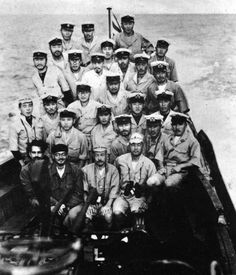
Soon after this , Netaji took the charge of Azad Hind Fauj from Rash Behari Bose. The Indian National Army got the financial support from South East Countries and the Japanese.
Netaji made a total of four brigade in the Indian National Army. They were:
- Gandhi Brigade
- Azad Brigade
- Subhash Brigade
- Nehru Brigade
A women regiment was also established which was commanded by Captain Lakshmi Sehgal. Bose made a Provisional Government (Azad Hindi Government) at Singapore which had its own Currency notes, Postage Stamp including courts and laws. One big achievement of Bose was that his Azad Hind Government was able to get the recognition from 9 countries, they were Japan, Germany, Italy, and the Philippines were some notable names. Unity, Sacrifice and Loyalty were the principles of the INA.
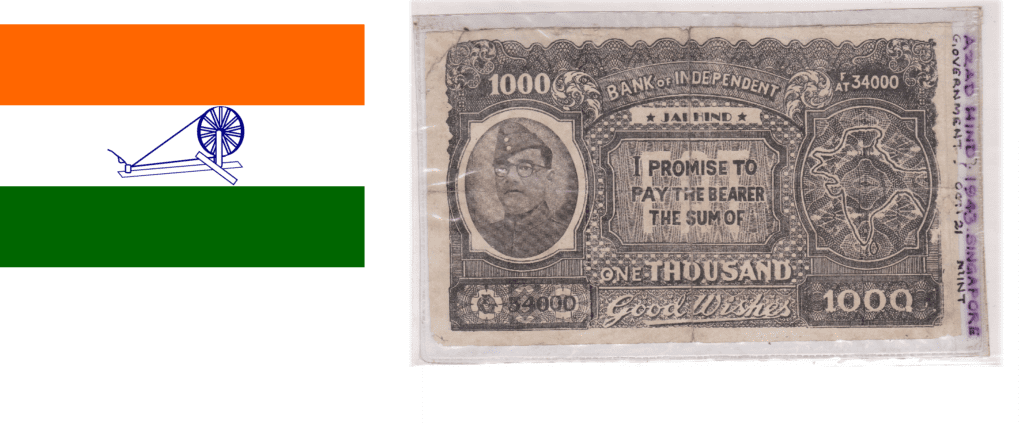
On February of 1944 with the help of the Japanese the INA under Subhash Chandra Bose attacked the British at Arakan (Burma). In March 1944, the Azad Hind Fauj crossed Chindwin (Manipur). They defeated the British army at various regions. They later hoisted the Indian National Flag at Moirang district of Manipur.
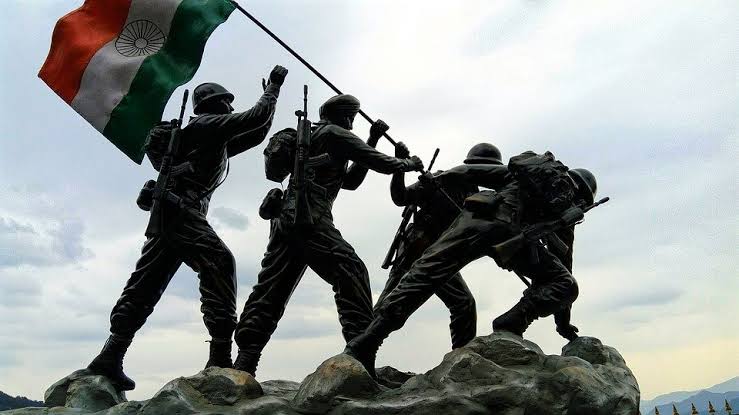
Turning Point:
The British had recruited a large number of Indian soldiers and were specially trained for Jungle warfare. The rough terrain of North East India along with the outbreak of the Monsoon affected the Japs and INA soldiers badly. Due to continuous rainfall ,diseases like Malaria spread along the army camp rapidly.
The British took the advantage of the situation and conducted heavy bombing of the occupied region of Japanese. Furthermore the Japs and INA had no supply system for back up. The Chindwin River also caused problems when the rainfall started. Lack of Medical supplies and food caused widespread death among the Japs and INA soldiers.
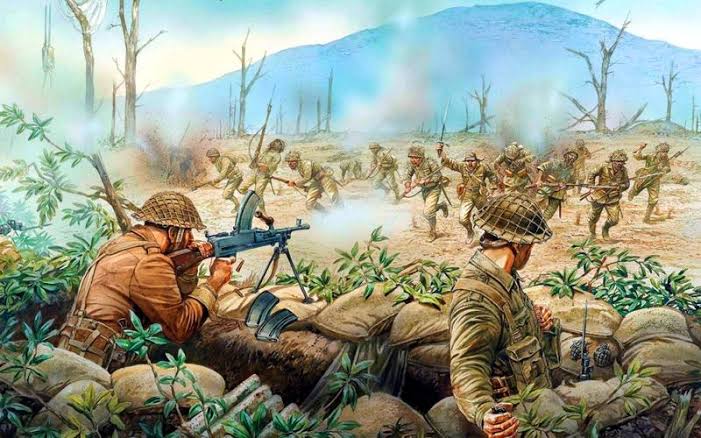
Due to ammunition and logistical problem the INA were forced to retreat deep inside the Burma region. Although the battle resulted in defeat of the INA along with the Japanese but what happened after this titanic battle was more important because of the effect it had on Indian history.
In the Battles of Imphal and Kohima , about 60000 Japanese soldiers along with 40000 british soldiers were killed and wounded.
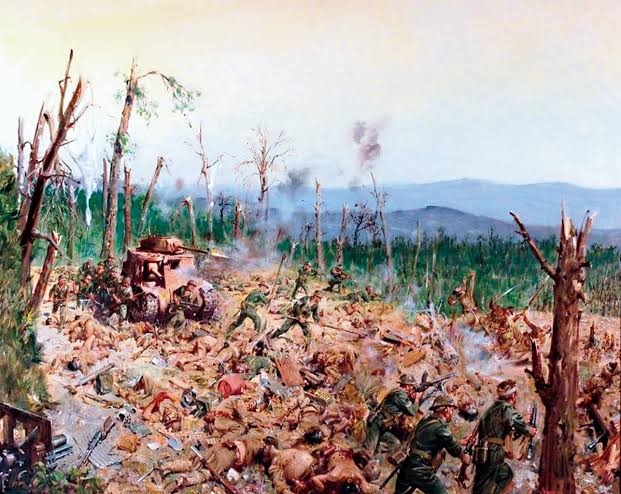
After the end of world war the British decided to punish the Indian Soldiers. They charged the INA soldiers of waging war against the king. The trials were held in the Red Fort in Delhi. The first three accused were Captains P.K .Sehgal, Captain Shah Nawaz, and Gurbaksh Singh Dhillon.

Inspiring Story of Major Durga Malla
Major Durga Malla (from Doiwala, Dehradun) was the Gurkha Soldier who fought against the British in the Battle of Imphal and Kohima. He was in the intelligence department of the INA. When the war was over Major Durga Malla was arrested and brought to Delhi for the INA trials.
The British presented several offer to the Gurkha soldier during the trial. One offer was to accept that he had made a huge crime by waging war against the king to escape the death penalty. But Major Durga Malla refused all the offers of the British and chose death.
later his wife was brought before him to change his mind but he refused. He said
Crores of Indians are with you. I am sacrificing my life for my motherland. This sacrifice shall not go in vain. India shall be free.
Major Durga Malla.

He was sentenced to death on 15 August, and hanged on 25 August 1944.
Towards Independence : Royal Navy Mutiny & scared Britishers
Due to this step (The INA Trials) of the British, the fellow Indian soldiers who were serving the British Raj mutinied against their White Masters. On 18 February 1946 Royal Indian Navy Mutiny spread across all the naval ships of British Indian forces. The slogans of Quit India were written on the walls of the naval ships. The rebels also found support from the Royal Indian Air Force men from Bombay and from the Gurkhas in Karachi who, known for their loyalty, refused to fire at the strikers.

But due to lack of political support from the Indian leadership, the mutiny ended very early. But the impact of this short mutiny was tremendous. Clement Atlee who was the Prime Minister of Britain during the mutiny told Justice P.B Chakraborthy that it was the formation of the INA under Subhash Chandra Bose and Mutiny of Navy and Air Force in 1946 that forced them to leave India ,and not any non-violent Gandhian movement.
Read more about the Great Subhash Chandra Bose: Unsung and Forgotten : Subhash Chandra Bose & the INA- Biggest fears of the British Empire
LIKE WHAT WE ARE DOING? DONATE TO DHARMAYUDH !
If you Support what we are doing and would like to contribute to help us grow and reach more Indians to teach them more about such forgotten historic Indian Heroes and stories, please consider donating any amount. It will help us grow

